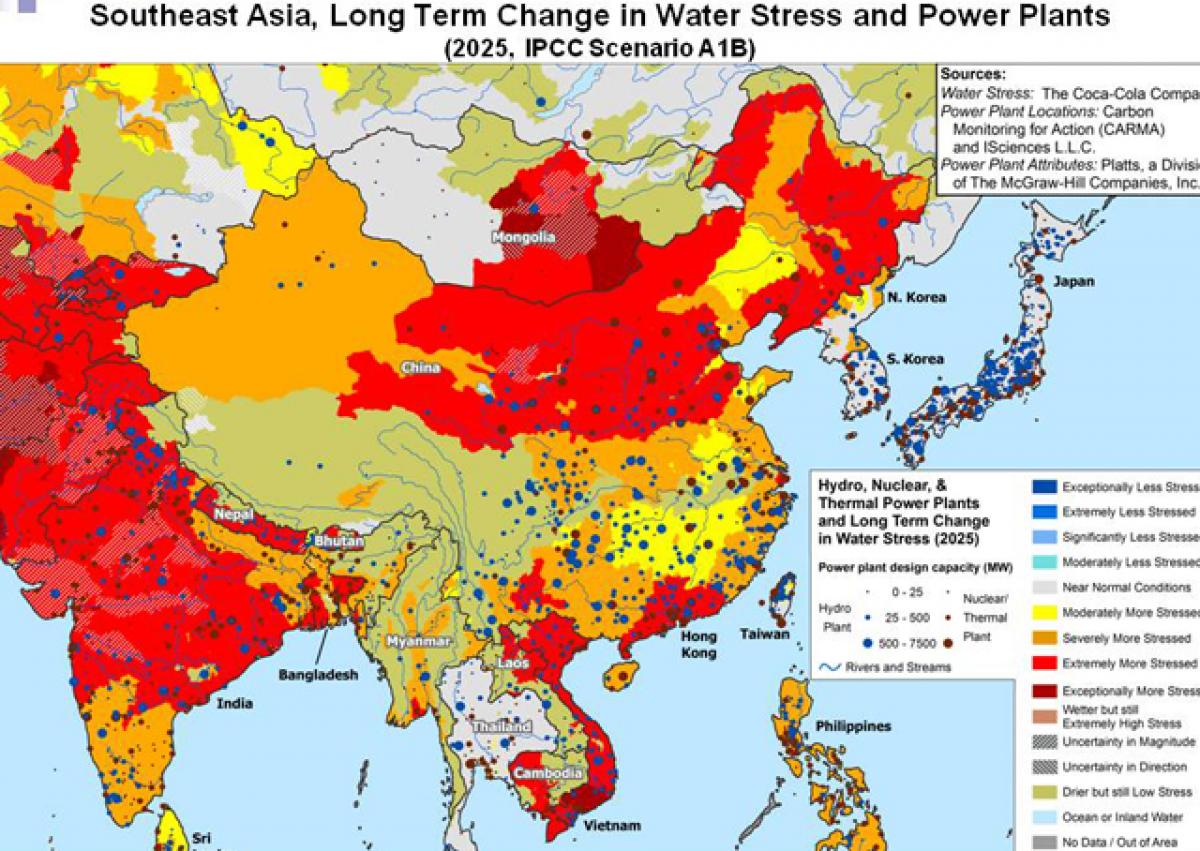Live
- BRS chief KCR to Embark on Bus Yatra Ahead of Parliamentary Elections from today
- Congress still undecided
- All-time highest score by Narayana student in AP SSC results
- TS Inter results announced, here is the direct link
- KTR rallies support for Praveen Kumar
- Deadline for submission of nominations for fourth phase elections to end tomorrow
- WhatsApp Update: WhatsApp to Bring In-App Dialer Feature for Calling Unsaved Contacts
- Kanna Lakshminarayana Leads Election Campaign in Amaravati Supporting Alliance Candidate
- YS Jagan to Conclude Memanta Siddham Bus Yatra, to file nomination in Pulivendula tomorrow
- Tamil Nadu Farmers Rally At Jantar Mantar, Demand Action On Crop Prices And River Interlinking
Just In

Burgeoning resource crunch in Asia. The 21st century is projected as the Asian century as the continent is seen spurring global economic growth and recovery. In the 19th century, European powers largely dominated the globe and the scenario remained more or less unchanged till the end of both World Wars.
Management of limited supplies will shape not only the economic trajectories of these countries, but also quells security issues. Asia is in dire need of attaining energy independence. India imports nearly 90% of its energy supplies
The 21st century is projected as the Asian century as the continent is seen spurring global economic growth and recovery. In the 19th century, European powers largely dominated the globe and the scenario remained more or less unchanged till the end of both World Wars.

Later, America slowly emerged eclipsing the European dominance, making it largely the American century. However, its hegemonic status began to fade away with the attack on Iraq and the subsequent five-year economic crisis. In the meantime, the Asian countries slowly began to rise and make their mark on the global platform.
With Asian countries ambitiously launching massive schemes to propel their economic trajectories, there is an insatiable appetite for natural resources. This has triggered an intense competition among the nations within the continent. Staring them in the face is an expanding resource constraint, which threatens to become a major burden on these growing economies.
They may be forced to import natural resources like mineral ores, fossil fuels like coal, oil and natural gas, putting pressure on international resources and triggering price volatility. Unlike North America, Europe and Australia, which are richly endowed with natural resources, Asia has the lowest per capita of resource availability.
Starved of crucial inputs like natural resources, these developing nations are increasingly dependent on external sources which in the long term can lead to geopolitical tensions and environmental degradation. All the major economies of Asia are on the brink of water stress.
International standards describe water stress as a situation when the availability of water is less than 1,700 cubic meters per person. China has to support 19% of global population with 6.7% of the global water resources. While the situation in India is even grim as it has a mere 4.3% of world water available at its behest for 17.8% of world population on its territory.
With the per capita availability of 2,030 cubic metres in China, it is still not water scarce by 2013, through India and South Korea are water-scarce. The problem of water scarcity is compounded in Asia because the rate of utilisation of fresh water exceeds its renewable stocks.
Further, in the wake of unscientific practices like digging deeper wells, polluting and eroding rivers and transferring surface water across the basins, Asia is using up its future resources for present use. In part, state policies like free electricity, subsidised diesel and irrigation subsidies have paved way for exhaustion of water resources. Consequently, Asia has the lowest efficiency of water use and productivity.
Asian economies are encountering major food challenges, too, as bulk of the water resources are now to be shared among agriculture, expanding industries and cities. As a result, the productivity of crops is lagging behind the demand and failing to keep in line with the rising levels of prosperity. Management of the limited supplies will shape not only the economic trajectories of these countries but also quells security issues.
Asia is in dire need of attaining energy dependence. India imports nearly 90% of its energy supplies. Until India becomes self-reliant in terms of energy, it can’t aspire to relieve economic poverty of its masses. Water and energy constraints in long term can hamper the growth and progress of the nation. The resource crunch has already triggered inter-state rivalries over the direction of gas and oil pipelines.
Fight over resources has become more common in Asia. Especially construction of dams and hydro electric projects by one country severely affects the lower riparian states. Asian countries must seriously evolve policies to tame the issues of resource sharing, else this might stoke tensions or conflicts. As many as 53 of 57 transnational river basins in Asia have no water-sharing arrangement or other cooperative mechanisms. This has been the reason for strained political relations among countries in most Asian regions.
By Dr Ramaharitha

© 2024 Hyderabad Media House Limited/The Hans India. All rights reserved. Powered by hocalwire.com







